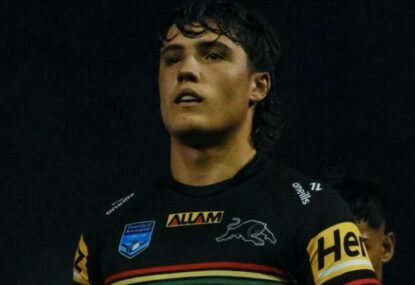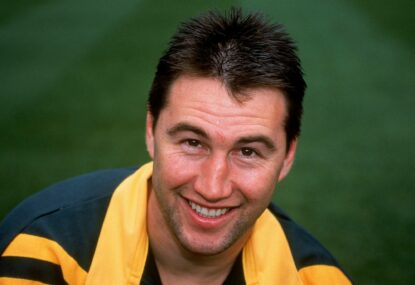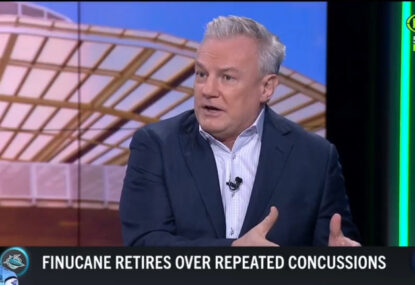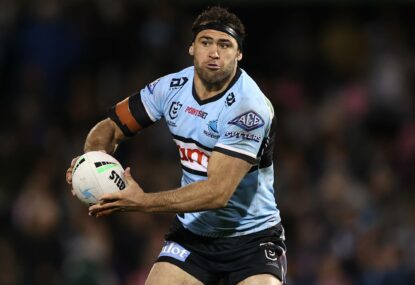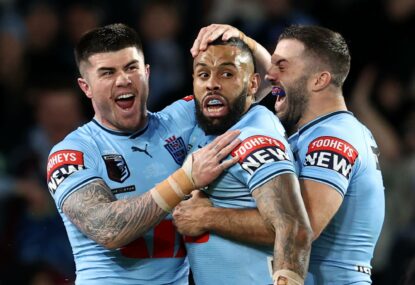It has been over a month since we all felt the COVID-19 wrath and everything that came with it for good measure, but the light at the end of the tunnel is seemingly within a socially-distanced-arm’s reach for us in Australia.
The Australian Government has proposed a staggered return to normality over the coming months, with grassroots sports supposedly slotted for a June 1st restart.
If this is accurate then it is massive news as the list of positivity to relay about why sport is essential to us as human beings are vast, but that is a discussion for another day.
Regardless, COVID-19 has affected the commencement of the winter season for a variety of our codes (e.g. soccer, rugby league, Aussie rules, and rugby union) but one sport in particular which is in the same boat as the rest is Oztag.
You know that version similar to rugby league where you have to rip a Velcro tag off the opponent’s shorts instead of tackling them? No, not the one where you just have to touch them and it counts as a ‘tackle’,
Oztag is the one where you’re allowed to grubber-kick and drop the ball backwards; it’s more like rugby league.
If you haven’t heard of it then it doesn’t come as a shock to me.
Oztag, like touch football, is a variant of rugby league that was developed back in 1992. Eight players per team at one time with 20-minute halves, it was a variation created to be more akin to the game of rugby league itself, albeit tackling, and since its inception has grown in popularity with over 200,000 participants playing across Australia – mainly in New South Wales and Queensland.
Why is Oztag dwarfed by touch football in popularity? The answer is simple, and the solution to bettering the sport is something that needs to be looked at by those that run Oztag Australia.
Touch Football Australia has around 700,000 participants country-wide and is recognised and funded by the Australian Sports Commission (ASC), a government agency that supports, promotes and invests in any sport that falls under their banner.
The importance of such recognition allows touch football to be played as a weekly representative sport in schools, it allows organisations seeking accreditation for emergency services and defence forces to play the sport and be covered through insurance, but ultimately it allows the sport to grow.
In early 2018, the NRL announced a partnership with Touch Football Australia that saw NRL clubs have their own male and female touch football teams playing in a weekly NRL-branded touch competition.

(Photo by Albert Perez/Getty Images)
The teams were made-up of touch football’s elite players where they would play their games as curtain-raisers to first-grade NRL matches in world-class stadiums.
The most vital benefit from this partnership was Fox Sports and Kayo agreeing to televise these touch football games live, as well as delayed, with commentary and analysis allowing the sport to be shown to a much wider audience while educating fans at the same time.
Although still an amateur sport, what this broadcast agreement has created is an opportunity for the sport to spread its wings, and after a few years of television exposure they could sign various sponsors which will eventually evolve the sport into a semi-professional outfit, where players can start receiving contracts and payment.
Currently, NRL Touch players have gear, travel, physiotherapy and registration expenses covered, but they do not receive match payments to play.
Touch Football Australia aligning with the NRL was the smartest move in their 52-year history. Re-branding the touch football emblem to look similar to the NRL’s not only pays homage to the sport that assisted in creating the game of touch football, but also portrays its independence as a sport.
Also utilising the NRL’s webpage as a means to promote and advertise their sport has proved beneficial as thousands of fans visit their site daily.
Contrarily, Oztag is not funded by the ASC, nor is it treated as a weekly representative competition in schools but rather played as gala day competitions, while their sport is also not accredited for emergency services or defence forces in Australia.
As stated earlier, overcoming the current COVID-19 restrictions is a priority, but this is about the future and if I was running Oztag Australia I wouldn’t be sitting idly hoping that this sport would magically grow on its own, because at the moment it is not good enough.
My main priority for Oztag would be reaching partnership with the NRL, creating that pathway to legitimise the sport similar to what touch football has pioneered.
Long-term, this partnership would help sustain an NRL-operated, weekly Oztag competition with live and delayed Fox Sports coverage, and although no player payments would occur in the first few years, all expenses would be covered by the NRL, with an eye to elevating the sport to semi-professionalism in the years following.
Perhaps in the inaugural season, the elite men and women are split among four Sydney-based teams representing North (Manly Sea Eagles), South (Cronulla Sharks), East (South Sydney Rabbitohs), and West (Penrith Panthers) in their respective Opens division before expanding to Queensland and New Zealand.
Setting out a long-term footprint for the game could undoubtedly serve as the catalyst for Oztag players to one day play this sport professionally.
The aim of this article isn’t to condemn Oztag, however it is outlining how their reluctance to partner with the NRL is baffling. Take the ‘Tagaroos’ (Australian Oztag national team) for example, the country’s very elite players, who have to fork out thousands of dollars every tournament to represent their nation – this should not be the case.
People have been paying to play Oztag for nearly thirty years out of love for the game. It’s time their administration woke up and realised its full potential to finally repay the faith.






























































































